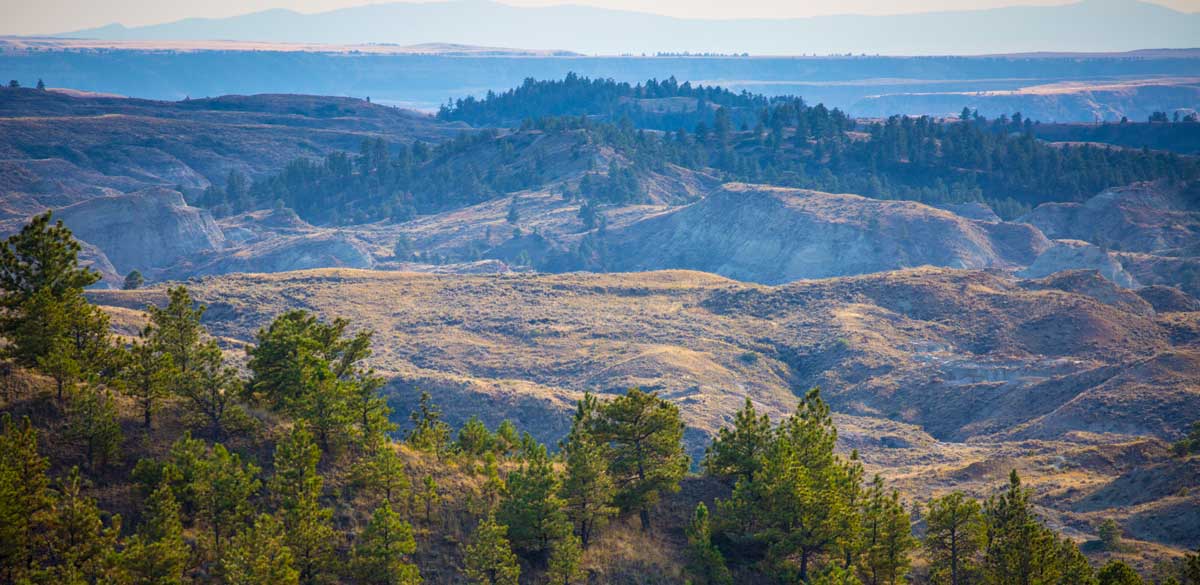When I moved to Montana in 1989 I lived in a cabin 22 steps from a high bank overlooking Rock Creek, the blue ribbon one with the famous salmonfly hatch. I kept a rod strung up by the door at all times. Fully in the talons of monomania, I set about trying to learn every run from where the creek joins the Clark Fork all the way to where it dendrites into forks. Mainly I caught rainbows, a few good browns spicing most days. Higher up, the gorgeous westslope cutthroats kicked in. The fish that fired my imagination, though, was the other native salmonid, bull trout.
A couple summers later, I was hitting the creek far upstream with my frequent partners in folly, Mark and Murray. They were fishing below me where two channels came together to form a long, deep seam at the base of a lion-colored cliff. Murray was happily if routinely hauling in a footlong cutthroat when the fish adopted the frantic darting and erratic course changes one associates with a congressman whose infidelities have just been laid bare. A long, dark torpedo detached from the green cellar of the run, shadowing the cutthroat. Its huge mouth bloomed white and Murray’s rod wrenched over, overmatched reel entering a long shriek. He faced certain doom if the fish got into the heavy water below the cliff. Grasping the threat, Mark sprinted into the tailout and turned it. After a good deal more splashing, stumbling and shouting, Murray managed to slide the bull’s head and shoulders into what now looked like a toy net. He cradled the fish just long enough for a couple photos. Then it was gone back into the dark water.
That was the first big bull any of us had seen, but more would follow. We made a radical shift in tactics, adopting cigar-sized streamers that played to their carnivorous streak. While lacking the speed or aerials of some other trout, bulls fight like heavyweights, slugging it out in the strongest currents, using wood and rocks to keep you on the ropes. As with elk, they have a burning will to get free and far from us.
September casts the same spell on both species. Bull elk and male bull trout reach the peak of their condition and go crazy: chasing one another, battling, one rolling in mud, the other in gravel. Migrations, too. Like long-haul truckers and cagey elk, bulls prefer to hole up during the day and travel at night.
GPS-tagged fish show that in places where they can run upriver without hitting a concrete wall, cruising 100 miles one way is common. Since the last Ice Age, bulls endured the radical spikes of thousand-year floods and fires, grinding droughts and cold snaps. Then in a little over a century, they became ghosts in more than half the waters they had so recently animated. Elk fared even worse. When it comes to recovery, though, bull trout aren’t nearly so lucky.
Bulls are strictly creatures of the Northwest. Even in their heyday, the farthest south they existed was the McCloud River just below Mount Shasta. They’re now extinct in California, and the southernmost bulls live in a single watershed in the far northeast corner of Nevada—the Jarbidge, where RMEF helped restore elk in 1994-95 after a 90-year absence. Every population that remains in Idaho, Montana, Oregon and Washington faces varying degrees of jeopardy. For all their no-quit fight and big-going ways, bull trout simply cannot live without cold, clean, connected and complex water.
In 1998, they hit the federal Threatened and Endangered Species list. Like mountain goats, wolverines and other creatures that evolved when our continent was purer and cooler, bull trout face a clouded future. The days when squadrons of yardlong fish roared up rivers, peeling off to shoulder up their natal creeks, will not come again. Deliberately fishing for them is now illegal in every river in Montana except the South Fork of the Flathead, deep in the fastness of the Bob Marshall Wilderness. Still, in the 20 years since they were listed, much good work has been done: dams and impassable culverts removed; old logging roads that dump gravel-choking sediment reclaimed; no-cut buffer zones on either side of streams created; spawning tributaries fenced, irrigation ditches gated; water left in streams. And, as comes clear in “Good Stewards: Streams of Life” (page 86), a lot more of the riparian areas vital to both elk and bulls conserved.
Bull trout helped land the money that drove home some of the Elk Foundation’s greatest land protection wins. As Bill Richardson, RMEF senior lands program manager, relates in “Streams of Life,” there came a moment of sweet serendipity in the shaky stages of a massive proposed acquisition on Oregon’s John Day River. Richardson was touring two project coordinators from the National Fish and Wildlife Foundation around the property when they came upon a pair of bull trout spawning in the hop-across headwaters. A $500,000 grant soon followed from NFWF, triggering matching investments from other partners. Bull trout have played a significant role in netting key funding for 14 RMEF acquisitions, protecting and opening to the public more than 53,000 acres of great elk habitat. In turn, the creeks and rivers that flow through those places will remain strongholds for the piscine bulls.
Apart from the fact that they grow to stupendous size, what I love best about elk and bull trout is their taste in country. For those who are happiest in wild places spiked with the possibility of encountering both kinds of bulls, there is no finer reason to try to keep the whole thing—mountains and rivers, fish and beast—in one piece.
